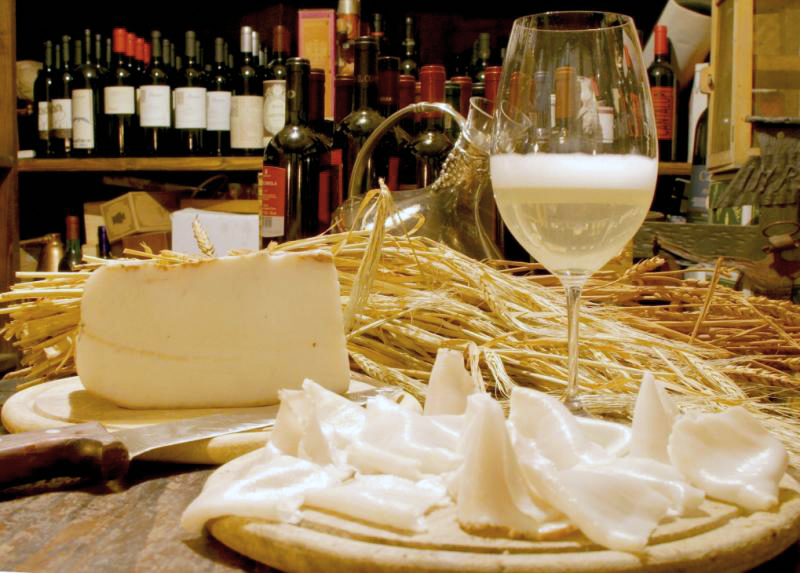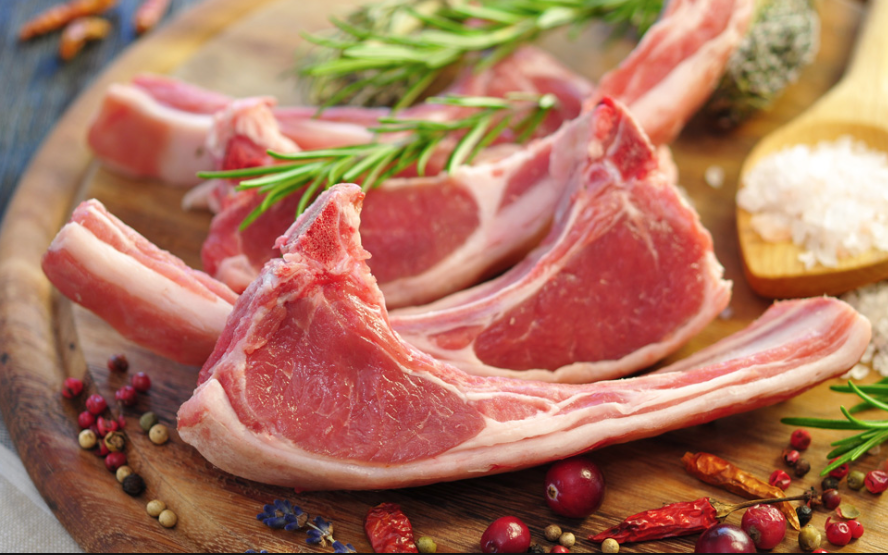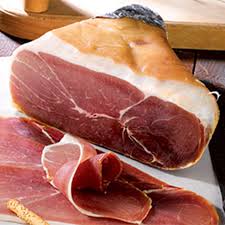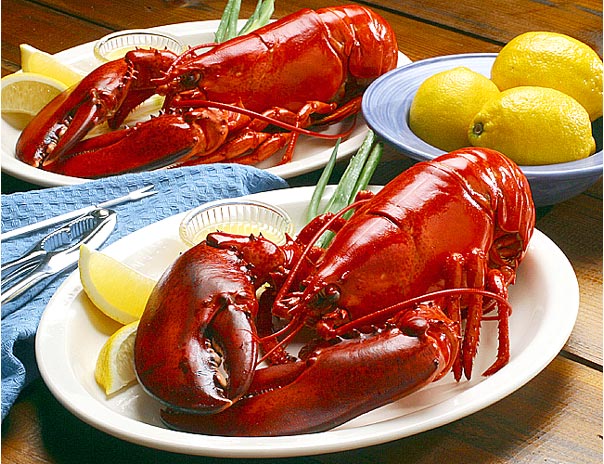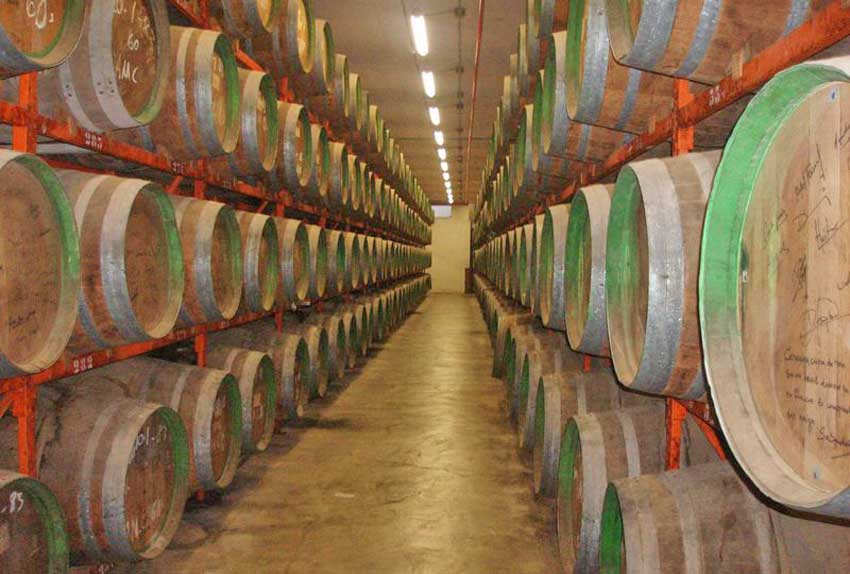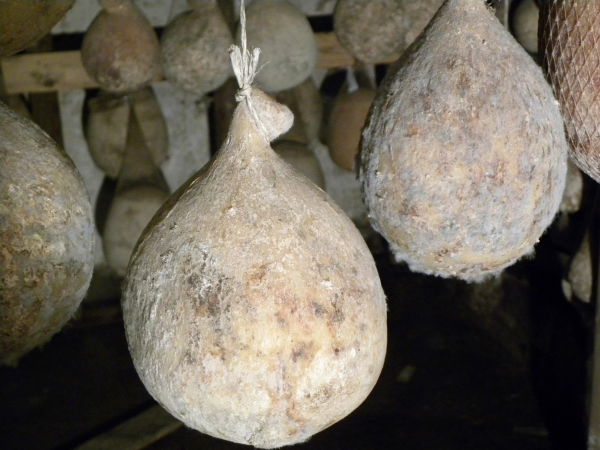The legend tells that even Michelangelo Buonarroti was a great admirer of it and, during his journeys in Carrara – when he personally chose the marble blocks to realize his masterpieces – he used to make huge meals of it.
Lardo di Colonnata" is obtained from the cuts of pork corresponding to the adipose layer (cleaned of the juicy part) that covers the back from the occipital region to the buttocks and that laterally reaches the belly. We use only natural ingredients, spices and aromatic herbs selected in the uncontaminated nature of the Carrarese side of the Apuan Alps, the seasoning lasts at least six months, following a recipe born more than four generations ago.
It is white, almost pinkish: sometimes you may be lucky enough to find the so-called "stripe" of intense pink color that increases the visual beauty and flavors the taste. The upper part is covered with a good thickness of sea salt, grey-black in appearance due to the spices with which it is soaked. The thickness of the piece (from 0,5 to 1,5 Kg.) varies from 4 to 8 cm. approximately. It has an unbeatable taste because of the microclimate consisting of air currents that can hardly escape from the "niche" in which the village of Colonnata is situated.
The ancient procedure is handed down from generation to generation. The seasoning takes place in marble "conche": blocks of white marble carved. The lard placed there together with salt and various spices produces a "brine" that preserves and maintains it for years. For centuries it has been said that the exceptional strength and health of the quarrymen are due to the lard of Colonnata.
Maturing lasts 6-10 months. The natural humidity of the caves and the porosity of the marble walls of the basin establish natural conditions for curing. Chemical and bacteriological analyses have demonstrated that the ancient "method" is extraordinarily effective and does not require any chemical treatment or preservatives for preservation.
In order to enjoy the delicacy of this delicious salami at its best, the ideal thing to do is to eat it cut into very thin slices on bread, preferably hot, as was once done by the Roman marble quarrymen and then by the quarrymen at the end of the 1940s, on toasted croutons with a few pieces of tomato.
